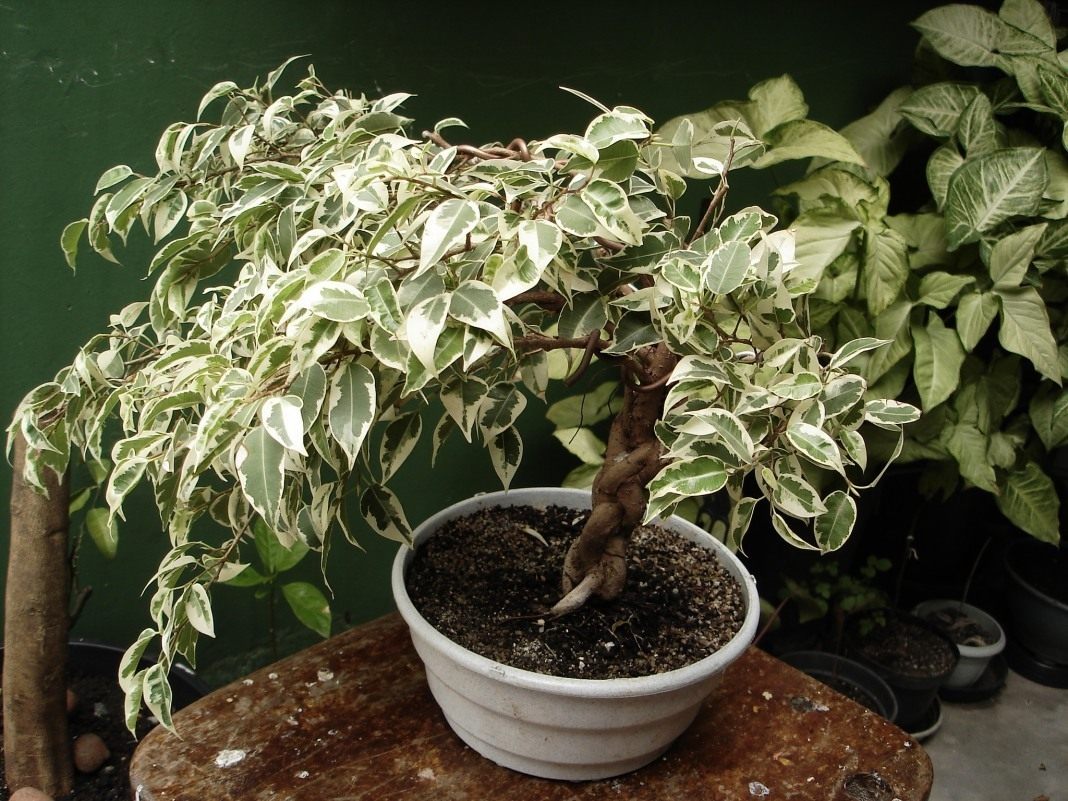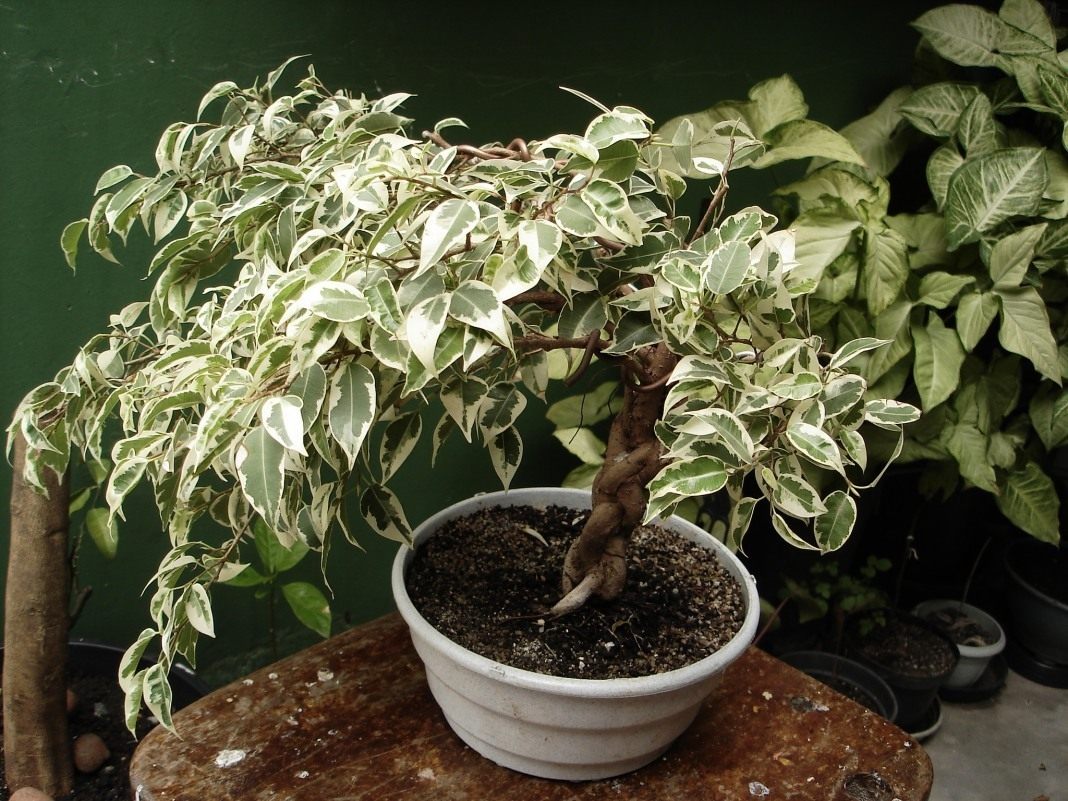Wild species ficus benjamin most common in Australia, the Philippines, South Asia, as well as India and China. This plant belongs to the mulberry family and can reach a height of no more than 25 m. The most vividly decorative properties are expressed in leaves with a smooth shape, with an aesthetic glossy overflow. They may differ in length, which is determined by the variety, but usually these ficuses have the following dimensions: length - 4-12 cm, width - 3-6 cm.
Ficus Benjamin is a perennial plant, which has a developed root system. But gardeners should remember that its roots are very fragile, so you need to be very careful during transplanting. To date, Benjamin's ficus is presented in a large number of varieties. Today, many varieties of this plant are known, which differ in color, size, leaf color, as well as conditions of detention.
Content
How to care for Benjamin's ficus?
In principle, Benjamin's ficus should be considered an unpretentious plant, however, a number of conditions can be distinguished in which he feels most comfortable. Therefore, if the care is carried out taking into account its characteristics, then for sure you can wait for abundant growth and the formation of bright healthy leaves.
Lighting
 Since under natural conditions this plant is provided with the warm gentle rays of the southern sun, then in the apartment it is necessary to create good illumination for it. When leaving, it is important to consider that the amount of sunlight greatly affects how intensive its growth and development will be.
Since under natural conditions this plant is provided with the warm gentle rays of the southern sun, then in the apartment it is necessary to create good illumination for it. When leaving, it is important to consider that the amount of sunlight greatly affects how intensive its growth and development will be.
In order for Benjamin's ficus to grow well, it must be provided with sufficient light... It is not recommended to grow it in shade conditions, which is primarily important for variegated varieties. Otherwise, over time, it will lose its original decorative properties, and its growth will be slowed down.
In this case, it is necessary to observe the measure here, since with an excess of sunlight, the opposite effect can be achieved, and then, instead of rapid growth, the ficus will burn, and its leaves will begin to turn yellow.
In those periods when the length of daylight hours is insufficient to provide your pet with the necessary amount of sunlight, additional lighting will have to be carried out. The need for it is especially acute in winter, when the sun warms very little. As a source of additional lighting use phytolamps... With the help of this modern energy-saving device, you can fully satisfy the needs of the ficus in light.
As for the summer, it is recommended to keep Benjamin's ficus near the windows at this time of year. The most suitable places for growing it will be window sills, balconies and loggias. Favorable conditions can be created on the southeast, east and west side of the house.The plant will feel even better if kept outdoors in partial shade.
It is necessary to be very careful when choosing a suitable place for growing Benjamin's ficus. The plant does not accept too frequent rearrangements. In this case, the expected reaction from it will be leaf fall, and recovery after it can take quite a long time.
Home temperature
Let us remind you once again that in summer it is allowed to grow Benjamin's ficus. outdoors... But in the process of leaving, it is necessary to constantly monitor the temperature at night: when it starts to drop below 15 degrees Celsius, you will have to bring the ficus into the house in the evening. In addition, you need to ensure that there are no sudden temperature fluctuations in the room. For your pet, this will not pass without a trace, as a result, you will soon be able to observe an unplanned leaf fall.
The optimal temperature at which you can grow Benjamin's ficus is the range from + 18 degrees to + 30 degrees. It is in such temperature conditions that the plant will feel most comfortable. It should be remembered that drafts in the room are unacceptable for Benjamin's ficus, which can also negatively affect its growth.
Watering Ficus Benjamin
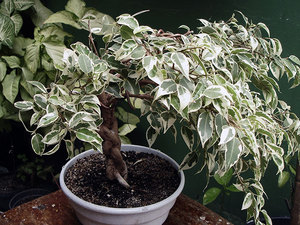 Home care requires special attention to the watering regime. It is pointless to give any specific recommendations in this regard, since this issue should be resolved strictly on an individual basis... The frequency of watering must be determined taking into account the conditions of maintenance and the characteristics of the cultivated variety. Therefore, the key factors that will determine the frequency of this event will be room temperature, air humidity, flower age, as well as light intensity and seasonality.
Home care requires special attention to the watering regime. It is pointless to give any specific recommendations in this regard, since this issue should be resolved strictly on an individual basis... The frequency of watering must be determined taking into account the conditions of maintenance and the characteristics of the cultivated variety. Therefore, the key factors that will determine the frequency of this event will be room temperature, air humidity, flower age, as well as light intensity and seasonality.
When caring for a ficus in the summer, it is possible to determine that the time has come for the next watering by the drying out of the earthen coma. Usually at such moments the soil dries out to a depth of 2-3 cm. It is necessary to grow a flower in a pot with drainage holes, so that it is possible to remove excess moisture into the pan. As it accumulates in the pallet you need to delete it periodically.
In winter, watering ficus Benjamin should be moderate and carried out in not as large a quantity as in summer. However, even at this time, care must be taken to ensure that the earthen lump remains moist.
A little about water
For the normal development of the flower, it is very important to use water of the appropriate quality for irrigation. It can be settled or boiled water at room temperature. If you want the ficus to get the most out of watering, it is recommended to use warm water in the bathroom.
For this you will need transfer the flower to the bath, cover on top with plastic wrap, then direct a warm stream of water into it for several minutes. After experiencing such a tropical downpour, your pet must stand in the bathroom for a while, otherwise hypothermia may occur. It is recommended to arrange such a procedure for Benjamin's ficus at least every three weeks. This method will allow not only to saturate the soil with moisture, but also to clean the leaves from dust and dirt.
Difficulties in growing indoor ficus
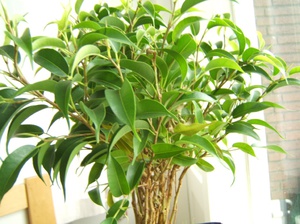 The presence of a whitish bloom on the leaves of the ficus is a well-defined sign that the plant is watered too abundantly.
The presence of a whitish bloom on the leaves of the ficus is a well-defined sign that the plant is watered too abundantly.
Sometimes growers can find on the back of the leaves black spots... From this we can conclude that the care of the plant was incorrect. Soon you can see how the leaves begin to turn yellow, and the plant gradually withers.
Pests such as spider mites and scale insects, aphids and mealybugs can cause great harm to the plant. Laundry soap can be used to effectively kill aphids. You can get rid of other pests using insecticides.
Fertilizing Ficus Benjamin
The main rule that a florist who grows Benjamin's ficus in his apartment should understand is that activities such as planting, transplanting, pruning and feeding should be planned in the spring sun. In other words, a new life cycle of a plant begins when warmth comes.
The first feeding plan for March-April, applying fertilizers to the soil no more than once a month. In May, the frequency of feeding is increased to once every three weeks. The need for ficus in fertilizers increases even more in the summer, when feeding is carried out every two weeks.
Specialized fertilizers can be used to provide the plant with the necessary nutrients, which can be found at any flower shop. They can also be replaced with complex universal mixtures.
Ficus Benjamin transplant
In the process of studying the features of Benjamin's ficus, novice gardeners are often interested in the time at which it is recommended transplant this perennial plant. The need for this event may arise only in the following cases:
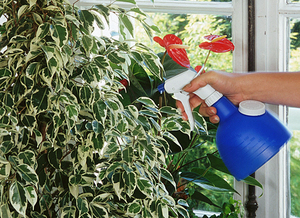 ficus grows in transport soil. This usually happens in a situation where the flower was purchased from a store. But it is not recommended to keep the plant in such land for a long time, since it will not be able to develop normally in it;
ficus grows in transport soil. This usually happens in a situation where the flower was purchased from a store. But it is not recommended to keep the plant in such land for a long time, since it will not be able to develop normally in it;- insufficient pot size. You can determine that the plant no longer has enough space by the roots protruding from the drainage hole;
- the need to obtain new bushes through reproduction;
- the presence of fungi or signs of other diseases in the soil.
It is also necessary observe the frequency of transplant ficus benjamin:
- in the first four years of life, a ficus transplant should be carried out at least once every four seasons;
- specimens aged 5 years must be replanted every 2-3 years;
- between transplants, it is necessary to renew the topsoil.
For a plant transplant to be successful, it is necessary adhere to the following rules:
- for transplanting, it is necessary to prepare a container, which should be 3 cm larger than the pot, where the ficus had previously grown;
- the plant feels most comfortable in leafy ground. You can also replace it with a special primer that can be found at a flower shop. Particular attention should be paid to the acidity of the soil, which should have a neutral reaction;
- before filling the pot with soil, drainage of a sufficient volume is laid in it;
- preparing for a ficus transplant, it is not recommended to touch the clods of earth present on the roots of the perennial. Due to their fragility, a procedure such as cleaning the roots from the ground can severely injure the ficus, as a result, it will take a long time to recover after that. Experts recommend transplanting using the transshipment method. In most cases, it guarantees a high survival rate of the plant, so novice growers can also use it;
- after transplanting, it is necessary to keep the plant in a "dry" mode for two days, after which you can begin to carry out regular watering.
Conclusion
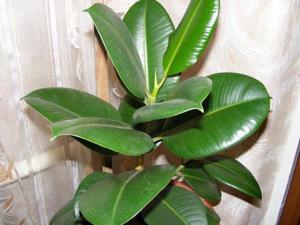 Ficus Benjamin is one of the most popular indoor plants, which is successfully grown at home not only by experienced, but also by novice flower growers. Many have appreciated not only its decorative properties, but also its unpretentiousness. However, in order to wait for the maximum "gratitude" from the plant, care should be planned taking into account the characteristics of this plant. Therefore, it is necessary to approach the conduct of the main events with special care.
Ficus Benjamin is one of the most popular indoor plants, which is successfully grown at home not only by experienced, but also by novice flower growers. Many have appreciated not only its decorative properties, but also its unpretentiousness. However, in order to wait for the maximum "gratitude" from the plant, care should be planned taking into account the characteristics of this plant. Therefore, it is necessary to approach the conduct of the main events with special care.
Ficus Benjamin reacts especially well to watering and lighting, therefore, these conditions need to be given special attention. Also, fertilizers are important for him, which must be applied in a certain amount, taking into account a specific time of year.Then, in the summer, Benjamin's ficus will begin to bloom abundantly, which will delight even the most sophisticated grower.

